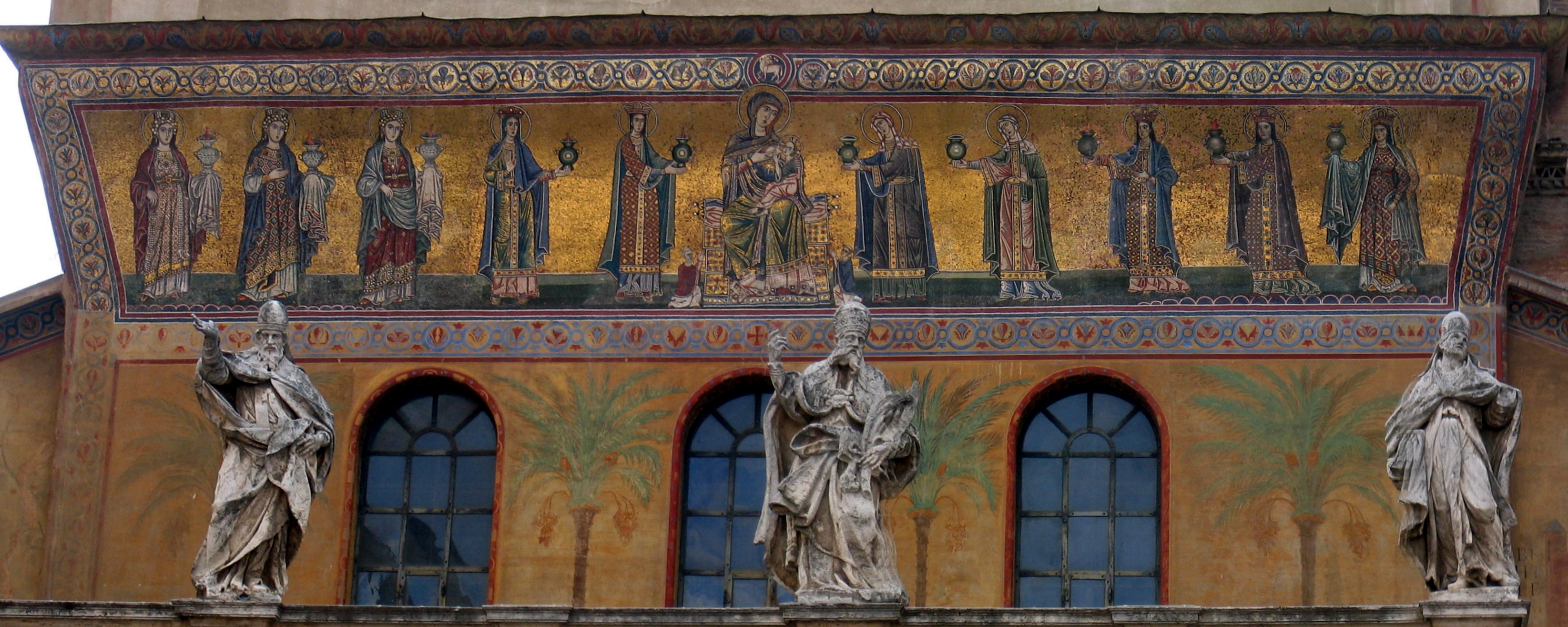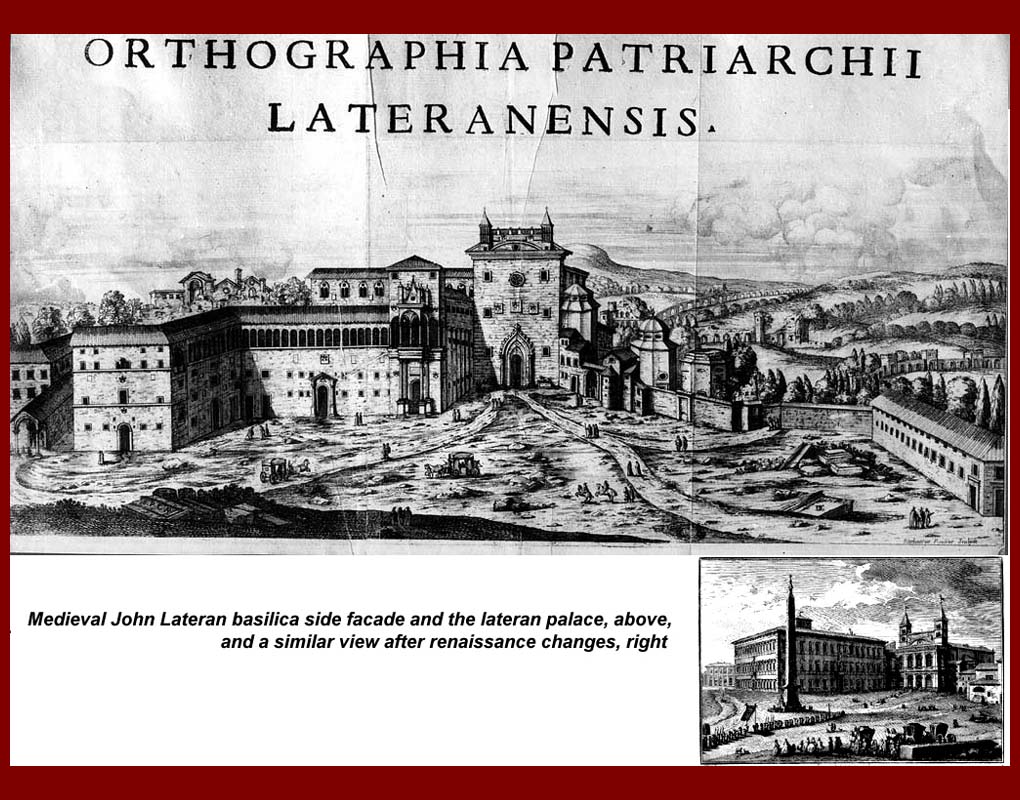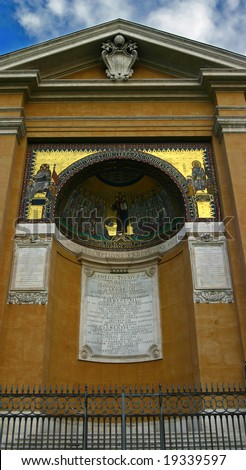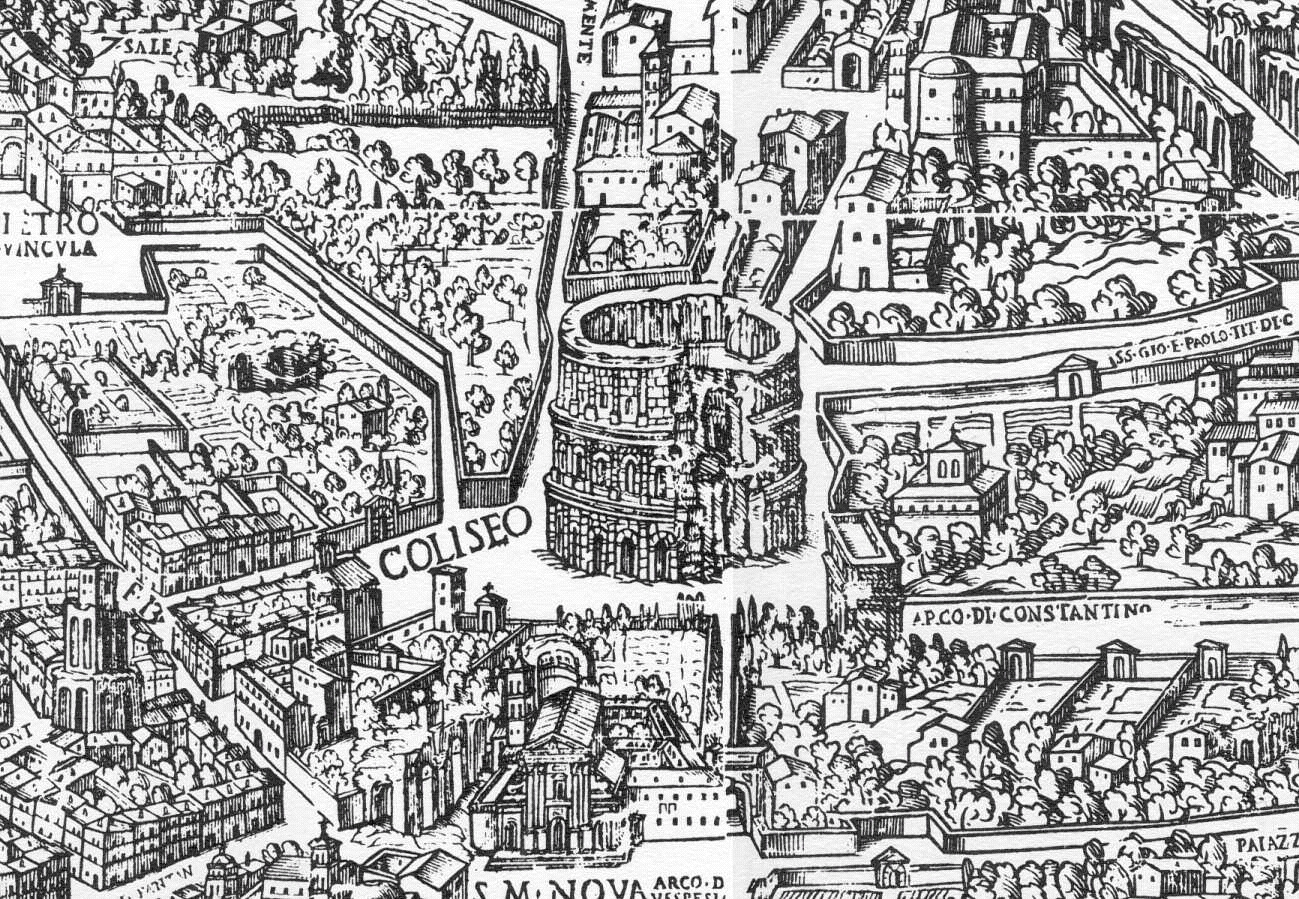Introduction
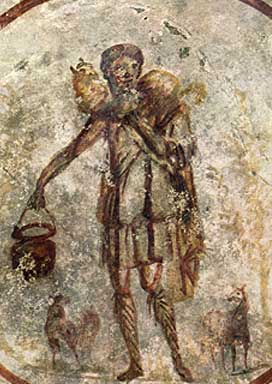 |
| source: wikipedia |
The Shepherd of Hermas is an account that answers two fundamental questions: what is repentance and what is the Church? The length and depth of Hermas' story prompts us to break it into three sections so that we may treat each composite part with due dignity.
The early Church received The Shepherd of Hermas' prophecy with the utmost respect, reading it both for personal edification and during the celebration of sacred rite. So esteemed was the Shepherd, Ss. Clement of Alexandria and Irenaeus of Lyon, along with Origen and Tertullian (before he became a Montanist) considered the Shepherd to be worthy of Holy Writ and included the account in their canons of Scripture. As time passed, the Shepherd's apocalyptic and prophetic elements wore thin, gradually depleting the popularity of the ancient text. Ss. Ambrose, Augustine, and Jerome still regarded the Shepherd as worthy reading in the fourth and fifth centuries, but the councils of Rome and Carthage saw the text unfit for the Bible. St. Jerome even recounted that the Greek Christians of the eastern empire persisted in reading the Shepherd during Divine services.
Hermas tells his story of sin and repentance, of the drift away from God and the reunion with Him through His Church. The Shepherd is not the Good Shepherd Jesus, nor is it a shepherd in a place called Hermas. The Shepherd of Hermas is the "Angel of Repentance" who guides Hermas through his visions and Divinely revealed allegories.
 |
St. Pius I, Pope and brother of
Hermas. source: wikipedia |
Our text itself was clearly written by one man and just as clearly not all written in one effort. The structure of the Shepherd of Hermas betrays the chronology of Hermas' visions and his recounting of them on paper: first "Visions," then the "Commands," and finally the "Similitudes." The last of these represents a maturity of thought and a clarity of vision not entirely present in the more direct early chapters.
Who was Hermas and when did he write? Dr. Brian Fitzgerald reminds us that Origen, born in 185AD, revered Hermas as canonical Scripture, suggest that the text pre-dates him by some time. The Muratorian fragment, one of the oldest extant lists of Scriptural Christian texts, dates to about 170AD and says of the Shepherd:
"But Hermas wrote The Shepherd very recently, in our times, in the City of Rome, where his brother Pius was occupying the chair of the church of Rome. And therefore, it ought indeed be read, but it cannot be read publicly to the people in Church or among the Prophets, whose number is complete, or among the Apostles, for it is after their time."
The notoriously unreliable
Liber Pontificalis confirms the other texts in its passage on St. Pius I:
"While he was bishop, his brother, Hermas, wrote a book in which he set forth the commandment which the angel of the Lord delivered to him, coming in the garb of a shepherd."
Hermas does mention an "elder" in the beginning of the Shepherd. Our text was originally written in Greek, the literary language of the time. The Greek words for elder usually come to us as episkopos (bishop), presbuteros (priest), or poimen (shepherd). Hermas, at the end of the second vision, mentions the name of an elder named Clement. This may reference St. Clement, the pope at the end of the first century, or a priest in Rome named Clement. Despite the probable dating of the Shepherd to the mid-second century, it is not implausible that Hermas received his early visions during his youth, under the leadership of Clement of Rome.
The Visions
Hermas' story begins with a series of five visions that reveal a rough draft of sin and repentance within the Church. Hermas one day meets his former mistress and owner, Rhoda, bathing in the Tiber river. He assists her and, in passing thought, thinks to himself that he would like a woman like her for a wife. Some time later Hermas was traversing the road to Cumae, south of Rome, when he saw a vision of Rhoda. His former mistress told him that he had sinned against God and her, that she would accuse him before Lord, but the accusation had not yet come to pass. A despondent Hermas is then visited by an elderly woman who asks him why he is sad. He tells her that he thinks Rhoda will accuse him of lust. The old woman corrects him, telling him:
"God is not angry with you on account of this, but that you may convert your house, which have committed iniquity against the Lord, and against you, their parents. And although you love your sons, yet did you not warn your house, but permitted them to be terribly corrupted. On this account is the Lord angry with you, but He will heal all the evils which have been done in your house. For, on account of their sins and iniquities, you have been destroyed by the affairs of this world. But now the mercy of the Lord has taken pity on you and your house, and will strengthen you, and establish you in his glory."
She tells Hermas to repent with all his heart, as those whose names are written in the "book of the Saints" repent with all their hearts. Hermas agrees to repent, reform, and return to God. His sin was not a violation, but a neglect of his family's loss of faith, a faith which he still held.
A year later Hermas again walks to Cumae and again sees the old woman escorted by six angelic looking boys. She reminds him that his "seed have sinned against the Lord and blasphemed against the Lord." He must make the message of repentance known to his wife and his children and to the entirety of the Church. This last point establishes Hermas as a visionary and a prophet of sorts for the Church's ears. After re-iterating the impending importance of repentance the elderly woman departs. An angel visits Hermas in his dormancy. He queries the angel as to the woman's identity. Is she a pagan oracle? "The Church," the angel replies. "She was created before all things; therefor she is aged; and for her sake the world was framed."
In the third vision the elderly woman shows Hermas a great, square based stone tower being built with stones by the six young angelic boys from the previous visions, stones delivered by other humanoid beings. The angels build the tower not on a foundation over land, but over an islandless water. The outer most stones fit together so snugly that one cannot see a crease or line in the side. These stones were brought from the deep of the water in perfect condition. Stones brought from land can fit inside the outer casing, but only after masonry and cutting. Some stones are rejected for their shape or size. Among these, some are kept near the tower, some are thrown far away, some tossed back to the deep, and others outright burned. She explains that the tower represents the Church and the stones represent people. The watery foundations are the waters of Baptism which save. The angels who escort the Church-elder woman and who build the tower are the same angels whom God charged with care of His creation. The perfect stones are the Apostles, prophets, bishops, teachers, and deacons who exercised their offices blameslessly and without corruption. The stones from the water are those who suffered "for the holy Name" of God. The rougher stones placed within the framework are the youthful and less temperate in faith who, although good, required warnings from angels throughout their lives. The stones rejected and left near the tower are sinners who, although they separated themselves from the Church by sin, can still be saved if they repent. This point would especially have interested ancient readers, who hitherto would have been greatly concerned about the future of those who had left the faith through loss of faith or for fear of death.
The woman does warn Hermas, "If the building shall be finished, they will have no more place, they will be castaways." Those thrown afar were the lawless in life. Some stones are both white and round. These are those who have the faith, but are similarly disposed to earthly passions and wealth. They can be fitted to the tower, but must have their excess cut away. Those burned have "rebelled from the living God and it entered no longer into their hearts to repent." Those stones outside the tower can not be within it, yet they may still be saved and put within the interior after "they have undergone torments, and have fulfilled the days of their sins." One Orthodox commentator begrudgingly concedes that this might be read as a precedent for the Latin concept of a purgatorial intermediate state.
Holding up the tower are seven women: Faith and her daughter, Continence, and her successive descendants, Simplicity, Knowledge, Guilelessness, Reverence, and Love. Their power flows from the oldest to the youngest, but are inseparable from each other. She again entreats Hermas to repent and to lead others to repent before the tower the angels complete the tower, at which point the world will end and repentance will no longer be possible.
The angel tells Hermas that the woman appeared in different ways because of his double-mindedness. Double-mindedness is a common theme in the Shepherd. Contrary to the translation, it is not speaking out of both sides of the mouth, but an internal conflict springing from having a foot in the door and a foot out. This internal conflict leads to disparate actions displeasing to God. The fervent Christian does not waiver in his devotion.
Hermas' fourth vision begins like the previous, with him stopping his travels to pray and to confess his sins. A voice tells him to rid himself of his "doubtful mind." Hermas is taken aback. How could he be of doubtful mind when the Lord so clearly engages him? Suddenly a cloud of dust kicks up and Hermas assumes a cattle stampede. Emerging from the cloud was not a herd, but a great beast. In spite of his timidity, Hermas passes the beast unharmed. He notices the beast's head is black, red, gold, and white. On the other side he again see the Church-woman, this time dressed as a virgin with a white turban. She tells the seer that the beast is a "type" of the end times, of the beast of the apocalypse which will wreak havoc. The black on the beast is the world, the red its impending suffering, the gold those who escaped, and the white those purified in the tower. She commands Hermas not to tarry any longer, but to make his visions finally known—he seems to have neglected this task several times.
The last and shortest vision takes place in Hermas' house. While reclining on the soda and luxuriating, a shepherd who claims to have been sent "from the most holy angel" enters Hermas' abode and salutes the resident. Hermas at first wonders if this is a temptation, but relents to the shepherd's veracity. The pastor angelicus then tells Hermas not to be confounded, but to write down the commands and parables that he is about to reveal. You, dear readers, will have to read our next post to find out what the commands are!











.JPG)









